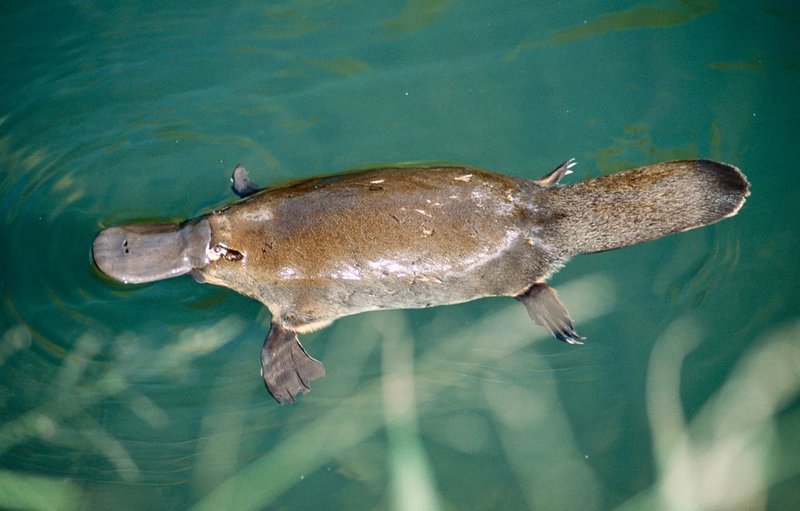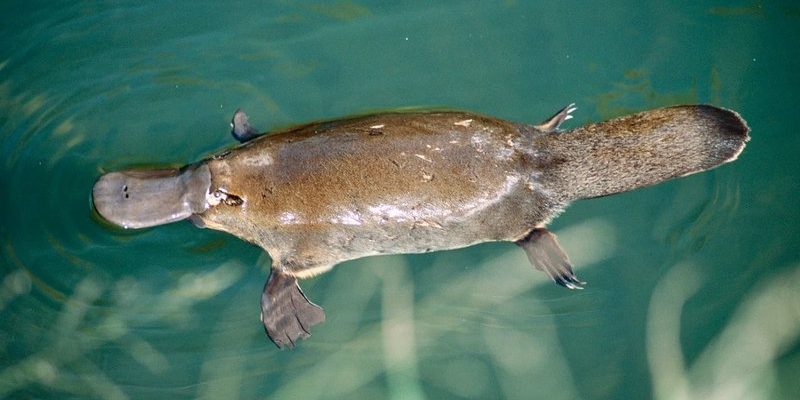
The platypus challenges our understanding of what mammals are. It lays eggs, has fur, and produces milk, which is more typical of mammals. But its bill resembles that of a duck, and its webbed feet are reminiscent of an otter’s paws. Honestly, if you were to create a “Frankenstein” animal, it might turn out looking like a platypus! Let me walk you through some of the most fascinating facts about this extraordinary creature that will likely surprise you.
1. A Mammal That Lays Eggs
You might be surprised to learn that the platypus is one of only a few mammals that lay eggs. Known as monotremes, these egg-laying mammals are quite rare. The platypus lays anywhere from one to three eggs at a time, which are leathery rather than hard like bird eggs.
After about ten days, the eggs hatch, and the tiny platypuses emerge. What’s even more interesting is that the mother doesn’t have nipples. Instead, she secretes milk through her skin, which pools in grooves on her abdomen. The little ones lap it up as they snuggle close. It’s a pretty fascinating way to feed their young, isn’t it?
2. Bill and Sensory Powers
The platypus’s bill is one of its most striking features. It isn’t just for looks; it’s equipped with electroreceptors that allow the animal to detect electric fields produced by the movements of prey in the water. Picture it like wearing super-sensitive headphones that pick up sounds the ear cannot hear.
When a platypus is hunting, it closes its eyes, ears, and nostrils, relying solely on its bill. It can find shrimp, insects, and worms while swimming, often foraging about 80% of the time underwater. Imagine having such a remarkable tool to help you find food. It’s almost as if mother nature designed it for an underwater treasure hunt!
3. Unique Swimming Style
The way platypuses swim is also fascinating. They use their webbed feet to paddle through the water, while their tails act like rudders for steering. When on land, the webbing folds back, exposing sharp claws for digging and foraging. This adaptability makes them perfect for their environment.
When a platypus is swimming, it can dive to depths of up to 60 feet! It doesn’t rely on vision underwater, which adds an exciting twist to its hunting technique. Instead, it uses its bill’s sensory powers to navigate and hunt, making it a true master of its aquatic realm.
4. Fur That Keeps It Warm
You might not think of a creature with a duck bill and webbed feet as needing warmth, but the platypus has thick, waterproof fur that keeps it cozy in chilly waters. It has two layers of fur: a dense undercoat for insulation and longer guard hairs that help repel water.
This amazing coat enables the platypus to thrive in various climates, from the freshwater rivers of Tasmania to the cooler streams of mainland Australia. When you think about it, that combo makes it a little like nature’s version of a wetsuit!
5. Venomous Spurs
Now, here’s something that might surprise you: male platypuses have venomous spurs on their hind legs. During mating season, they can deliver a painful sting to rival any bee. The venom isn’t lethal to humans but can cause severe pain and swelling.
This trait is quite rare among mammals and serves as a defense mechanism or sometimes a way to compete for mates. Just imagine trying to impress someone while also wielding a venomous weapon! It’s a wild way to showcase dominance in the animal kingdom.
6. A Unique Diet
The platypus has a varied diet, primarily consisting of insects, larvae, and small crustaceans. It consumes about 20% of its body weight daily! That’s quite a feast for such a small creature.
When foraging, it dives underwater, sifting through mud and sand with its bill. Once it has a meal, it stores it in cheek pouches until it surfaces to chew. The way it collects and organizes its food is a clever adaptation to its aquatic lifestyle, similar to how we might pack a snack for a long hike.
7. Conservation Status
Despite being an iconic symbol of Australian wildlife, the platypus faces threats from habitat loss and climate change. Their natural habitats are being fragmented, which can reduce their numbers. It’s a reminder of how important it is to protect the ecosystems they rely on.
Conservation efforts are in place to monitor and protect their populations. If you ever get a chance to see one in the wild, you should take it! It’s like witnessing a living piece of history.
8. Cultural Significance
The platypus has made a significant mark on Australian culture and folklore. Indigenous Australians have stories and traditions involving the platypus, often viewing it as a symbol of adaptability and resilience.
In modern culture, it’s also featured in cartoons and movies. Who can forget the clever, suave character of Perry the Platypus from *Phineas and Ferb*? Such representations help people connect with the animal beyond just its scientific traits, making it a beloved icon.
9. Reproductive Secrets
The reproductive habits of the platypus are as unique as the animal itself. After mating, the female builds a burrow where she lays her eggs. The male plays no part in raising the young, which is more common in many mammal species.
Once the eggs hatch, the mother cares for them for several months, ensuring they’re safe and well-fed. This period is critical for the baby platypuses, as they learn essential survival skills from their mother. It’s a fascinating glimpse into the nurturing aspect of this extraordinary creature.
10. They’re a Scientific Mystery
The platypus has puzzled scientists for centuries. When it was first discovered, some believed it was a hoax! With the mix of characteristics—a bill, webbed feet, and the ability to lay eggs—it defied classification for a long time.
Even today, scientists continue to study the platypus for insights into evolution and mammalian biology. Who knows what other secrets this creature holds? Its strange features remind us how diverse and mysterious the animal kingdom truly is.
In conclusion, the platypus is not just a quirky animal; it’s a living testament to the wonders of evolution and adaptation. With its mix of characteristics that don’t neatly fit into typical categories, it sparks curiosity and admiration. So, the next time you hear about this fascinating creature, you’ll have a treasure trove of facts to share—and maybe even a newfound appreciation for the wonders of nature!

